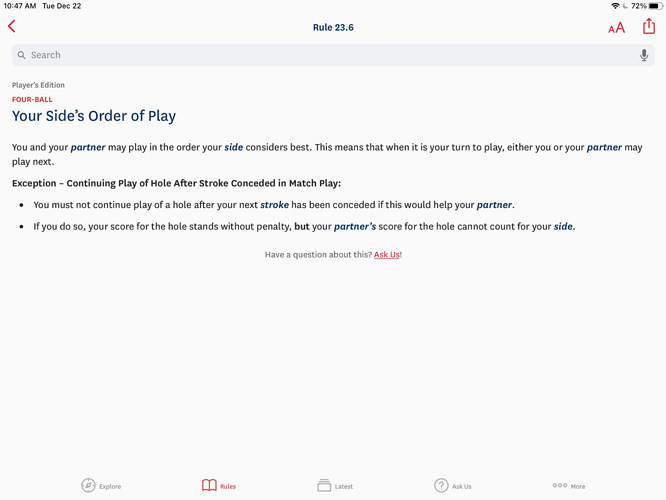Downloaded the USGA rules app, and actually starting to read the rules. Also went down a YouTube rabbit hole on weird rulings. I am WAY more knowledgeable about the rules since joining here, with @davep043 being an influence. His advice was “read the rules”. Really ground breaking advice for me!!
Here’s my question on 4 ball though. Order of play rule shown below:
So, I am assuming order of play is decided by who is furthest out. The side with the ball that is furthest out can decide who plays first.
So… a scenario
Team A has two balls 10 ft from hole for birdie putts.
Team B has a ball at 10ft and a ball at 20 ft on the same line. The 10ft putt is for par and the 20 ft putt is for birdie. In this situation:
- Because Team B has the 20 ft putt, they are away
- Either player on Team B can putt since it is their turn
- if Team B decides to let the player with the 10 ft par putt go first (in order to show the line), team A could concede the par putt in order to avoid showing the 20ft birdie putt the line
Am I getting this right? This seems like a decision I could go either way on (conceding the par). It would depend on the chances of the player with the 20 footer 3 putting. Showing him the line may improve his chances slightly, but still think that birdie from 20 ft is unlikely (even if he sees line).

